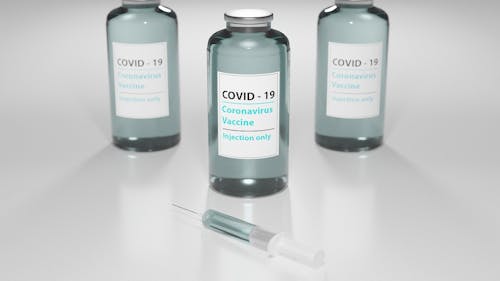Rutgers professor breaks down recent report on vaccine hesitancy in U.S.

A recent report from The COVID States Project displayed survey data regarding coronavirus disease (COVID-19) vaccine hesitancy across the 50 states. Katherine Ognyanova, an assistant professor at the School of Communication and Information and an author of the report, said that more than a fifth of Americans are currently unwilling to get vaccinated.
Ognyanova discussed the prevalent issue of vaccine hesitancy in the U.S. and how vaccination campaign messaging can be improved.
Vaccine hesitancy varies between different groups due to a multitude of factors, she said. For instance, Black Americans experience more vaccine hesitancy compared to other racial groups, according to the report.
Ognyanova said this hesitancy is due to a difficult history of mistreatment by the healthcare industry and within public health. The Black community has been especially hard-hit by the pandemic, and therefore, it is crucial to ensure they have vaccine access, she said.
Older Americans, especially those above 65, are far more willing to get vaccinated compared to younger Americans, according to the report. Ognyanova said that older people are more likely to have complications from COVID-19, are more aware of the risks and are more enthusiastic to receive a vaccination quickly.
In addition, vaccine hesitancy can run along partisan lines, with Republicans and Independents being more hesitant to receive a vaccine than Democrats, according to the report.
“It’s an interesting combination of groups of people that, for different reasons, want to or don’t want to get the vaccine, which makes it kind of a challenge to design messages,” she said.
Ognyanova said people responded better to messages that framed vaccinations as necessary to prevent harm to the community rather than those that made vaccinations a matter of patriotism.
Public figures are generally less effective as messengers, she said, and endorsements by polarizing politicians can also have a negative effect.
“Political (figures) seem to be probably not the best messengers that could get everyone mobilized all at once, just because they’re likely to have (a) different impact depending on who's listening,” Ognyanova said.
She said that people responded best to messages where vaccines were recommended by personal practitioners and doctors in their community, which gives these individuals a critical role when delivering messages regarding vaccination.
Overall, New Jersey is among the states with the least COVID-19 vaccine hesitancy, with only 17.3 percent of respondents saying they would not get vaccinated, according to the report.
A state’s level of vaccine hesitancy ultimately depends on the characteristics of the population, as well as the effectiveness of its vaccine rollout plan, Ognyanova said.
“The first step is to really do more to convey the information about how to get the vaccine to the broader public,” she said.
New Jersey’s vaccination program includes a registration website that allows people to see when a vaccine is available to them, which makes the process easier for the public, Ognyanova said. In many other states, she said that people are having a tough time figuring out how to get vaccinated.
As of yesterday, New Jersey has administered more than one million vaccines, according to the state’s COVID-19 Dashboard.
Ognyanova said that it is especially important to reach out to groups with higher vaccine hesitancy, like the Black and Latinx communities, which have been disproportionately affected by the pandemic. An effective strategy would be collaborating with trusted figures from within these communities to promote vaccinations, she said.
“We hope that ... we will have a lot of people vaccinated by the summer but, again, probably not everyone who wants a vaccine,” Ognyanova said. “I think we have months ahead of us. We need to be careful still.”



